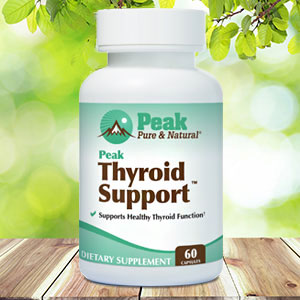Get Easy Health Digest™ in your inbox and don’t miss a thing when you subscribe today. Plus, get the free bonus report, Mother Nature’s Tips, Tricks and Remedies for Cholesterol, Blood Pressure & Blood Sugar as my way of saying welcome to the community!
Menopause Q & A: Progestogens vs progesterone

I commonly get questions from my female patients about the use of synthetic progestogens in menopause and this month a new patient came to me taking Prempro. I’d like to share why naturally-derived progesterone is safer and more effective.
Menopause management
Very little or no improvement in menopausal symptoms are reportedly seen with alternative therapies such as coumestrol and femarelle (plant-based estrogen-like compounds), black cohosh, acupuncture, and Chinese herbal medicine. And, the effect of soy isoflavones for hot flashes and vaginal dryness is promising at best.
That’s why doctors recommend hormone replacement therapy to calm symptoms. The question is, which kind of hormone replacement? Why not simply take Provera (medroxyprogesterone) or Prempro (conjugated estrogens/medroxyprogesterone acetate)?
I’ll tell you why not…
Waning hormones and menopause
We know that menopause is caused by a decrease and then cessation of progesterone and estradiol hormone.
For many years before 2002, synthetically-derived hormones were routinely prescribed for menopause. Fortunately, large studies were completed in 2002, collectively called the Women’s Health Initiative (WHI), revealing that synthetic oral estrogen plus progestogen (not natural progesterone from plant sources) was actually not as safe as we thought.
Now it is known that they put women at too much risk for breast cancer, heart attack, stroke, and pulmonary embolism.
Furthermore, the Women’s Health Initiative again later reported this effect of progestogen (not progesterone) in 2009 with a study reported in the New England Journal of Medicine and in 2010 with a study reported in the Journal of the American Medical Association looking at more than 16,000 postmenopausal women from 40 U.S. clinical centers over nearly six years.
These studies involved women taking synthetic progestogens for extended periods and reconfirmed that they had an increased incidence of breast cancer, a higher risk of heart attack and stroke, and more pulmonary embolism. The headline news at the time generated by the mainstream media warned that “hormone therapy is dangerous,” and ignored the fact that these studies pertained to synthetic hormones (not natural hormones).
This is because medroxyprogesterone closely resembles the chemical structure of real progesterone but with some slight differences in the molecular configuration, thus it produces some non-progesterone-like effects, and can potentiate the proliferative (cancer-producing) action of estrogen in your body. Synthetic progestogen is 10 to 100 times more potent than natural progesterone and is dosed accordingly.
Moreover, the synthetic progestogens such as medroxyprogesterone (Provera®), Norethindrone, Levonorgestrel, and Norethindrone acetate are not produced naturally by your body, thus you don’t naturally have enzymes to properly metabolize them. Unlike medroxyprogesterone, natural compounded or micronized progesterone is an exact chemical duplicate of your body’s home-made progesterone.
Fortunately, large clinical trials have now verified that natural (a.k.a. “bio-identical” or “bio-mimetic”) estradiol, estriol and progesterone are effective for curbing menopausal symptoms, plus they are safer and more effective in reducing diseases such as breast cancer, cardiovascular disease, osteoporosis, and even Alzheimer’s dementia, which I’ll discuss further in this report.
Progesterone—not synthetic chemical progestogens
I know that doctors recommend synthetic progestogen and synthetic estrogen for woman suffering with significant menopausal symptoms—but only for the shortest duration and at the lowest dose possible.
Knowing that breast cancer risk is clearly much higher when using synthetic progestogens, but not with progesterone from plant sources, it makes sense to learn about natural progesterone.
Consider these studies:
- The 1995 Nurse’s Health Study reported that in 58,000 postmenopausal women were followed for 16 years, estrogen (oral) alone increased risk for breast cancer by 23 percent, but addition of synthetic progestogen resulted in tripling the risk.
- In 2000 Rose and colleagues found that the risk for breast cancer increased by 25 percent for every 5 years of progestogen use compared with estrogen alone in 1897 postmenopausal women on oral estrogen and synthetic progestogen.
- Lyytinen and colleagues in 2009 reported their use of estrogen and a synthetic progestogen and found increased breast cancer rates in 3 years.
Synthetic progestogens worsen cardiovascular (heart and blood vessel) disease risk through vasoconstriction (while progesterone causes vascular relaxation), worsened lipid (cholesterol) profiles (which improve with progesterone).
This is why I am surprised when women come to me still taking synthetic medications such as Prempro (conjugated estrogens and medroxyprogesterone acetate) prescribed by their gynecologist. Let’s consider more of the benefits of natural progesterone supplementation.
Progesterone lowers breast cancer risk
I have access to 8 well designed studies showing with clear clinical significance that the use of natural progesterone lowers the risk of breast cancer. Here are just a few…
- In 1981 the Journal of Epidemiology reported that 1083 women were treated for infertility and followed for 13-33 years for incidence of breast cancer. The premenopausal risk for breast cancer was 5.4 times higher in women with low progesterone levels compared to those with normal levels, and there were 10 times more deaths from cancer in the low progesterone group compared with those with normal progesterone levels.
- A 2002 study reported in Cancer Epidemiology, Biomarkers & Prevention showed in a case-control study looking at third trimester progesterone levels and breast cancer risk that increasing levels of progesterone were associated with decreased risk of breast. This association was strongest before the age of 50. They also found that those in the highest quartile (1/4th) of progesterone levels had a 50 percent reduction in breast cancer compared with those in the lowest quartile of progesterone levels.
- In 2004 a prospective study of progesterone levels and associated breast cancer risk in 5963 women was reported in the International Journal of Cancer.
- In 2008 researchers reported that they had followed 80,000 postmenopausal women for over 8 years. They showed that using natural progesterone along with estrogen significantly reduced breast cancer risk compared to the use of synthetic progestin.
Progesterone lowers uterine cancer risk
In 2003 researchers found that transdermal or vaginal progesterone cream for four weeks reduced uterine lining thickening caused by an estrogen drug in postmenopausal women.
Progesterone improves sleep
Low-dose, continuous combined hormone replacement therapy with estrogen and progesterone significantly improves sleep in postmenopausal women with sleep difficulty.
Progesterone improves bone strength
Natural progesterone stimulates osteoblast activity (new bone formation) and helps prevent osteoporosis. Estrogen does too, and when added together, progesterone and estrogen collaborate for maximal prevention of bone loss. The other contributors to bone loss are poor eating habits, vitamin D and mineral (e.g. boron) deficiencies, and lack of exercise.
Progesterone acts as a diuretic
Micronized progesterone is reported to act as a diuretic, and are spared the fluid retention (and thus weight gain) often experienced by synthetic progestogen.
To healthy hormones and longevity,
Michael Cutler, M.D.
Sources:
- Lethaby, A; Marjoribanks, J; Kronenberg, F; Roberts, H; Eden, J; Brown, J (10 December 2013). “Phytoestrogens for menopausal vasomotor symptoms” Cochrane Database of Systematic Reviews. 12: CD001395.
- Hormone replacement therapy (menopause) — Wikipedia
- Leach, MJ; Moore, V (12 September 2012). “Black cohosh (Cimicifuga spp.) for menopausal symptoms” Cochrane Database of Systematic Reviews. 9: CD007244.
- Dodin, S; Blanchet, C; Marc, I; Ernst, E; Wu, T; Vaillancourt, C; Paquette, J; Maunsell, E (30 July 2013). “Acupuncture for menopausal hot flushes” Cochrane Database of Systematic Reviews. 7: CD007410.
- Zhu, X; Liew, Y; Liu, ZL (15 March 2016). Chinese herbal medicine for menopausal symptoms. The Cochrane Database of Systematic Reviews. 3: CD009023.
- Bolaños, R; Del Castillo, A; Francia, J (2010). “Soy isoflavones versus placebo in the treatment of climacteric vasomotor symptoms: systematic review and meta-analysis” Menopause. 17 (3): 660–66.
- Rossouw JE, Anderson GL, Prentice RL, et al. Risks and benefits of estrogen plus progestin in healthy postmenopausal women: principal results from the Women’s Health Initiative randomized controlled trial. JAMA.2002 Jul 17;288(3):321-33.
- Colditz GA, Hankinson SE, Hunter DJ, et al. The use of estrogens and progestins and the risk of breast cancer in postmenopausal women. N Engl J Med. 1995 Jun 15;332(24):1589-93.
- Risks and Benefits of Estrogen Plus Progestin in Healthy Postmenopausal Women JAMA. 2002;288(3):321-333.
- Chlebowski RT, et al. Breast Cancer after Use of Estrogen plus Progestin in Postmenopausal Women. N Engl J Med 2009; 360:573-587.
- Chlebowski, RT, et al. Estrogen Plus Progestin and Breast Cancer Incidence and Mortality in Postmenopausal Women. JAMA. 2010;304(15):1684-1692.
- Campagnoli C, Clavel-Chapelon F, Kaaks R, Peris C, Berrino F. Progestins and progesterone in hormone replacement therapy and the risk of breast cancer. The Journal of Steroid Biochemistry and Molecular Biology. 2005;96(2):95-108.
- Leonetti HB, Longo S, Anasti JN. Transdermal progesterone cream for vasomotor symptoms and postmenopausal bone loss. Obstet Gynecol. 1999 Aug;94(2):225-8.
- Ross RK, Paganini-Hill A, et al. Effect of hormone replacement therapy on breast cancer risk: estrogen versus estrogen plus progestin. J Natl Cancer Inst 2000;92(4):328-332.
- Lyytinen H, Pukkala E. et al. Breast cancer risk in postmenopausal women using estradiol-progestogen therapy. Obstetrics and Gynecology 2009;113(1):65-73.
- Prempro®/Premphase® (Conjugated Estrogens/Medroxyprogesterone Acetate) — Pfizer
- Cowan LD, et al. Breast cancer incidence in women with a history of progesterone deficiency. Am J Epidemiol 1981;114(2)209-217.
- Peck JD, Huka BS, Poole C, et al. Steroid hormone levels during pregnancy and incidence of maternal breast cancer. Cancer Epidemiol Biomarkers Prev 2002;11(4):361-368.
- Micheli A, Muti P, Secreto G, et al. Endogenous sex hormones and subsequent breast cancer in premenopausal women. Int J Cancer 2004;112(2):312-318.
- Fournier A, Berrino F, Clave-Chapelon F. Unequal risks for breast cancer associated with different hormone replacement therapies: results from the E3N cohort study. Breast Cancer Res Treat 2008;107(1):103-111.
- Leonetti HB, Wilson KJ, Anasti JN. Topical progesterone cream has an antiproliferative effect on estrogen-stimulated endometrium. Fertil Steril. 2003 Jan;79(1):221-2.
- Gambacciani M, Ciaponi M, Cappagli B, Monteleone P, Benussi C, Bevilacqua G, Vacca F, Genazzani AR. Effects of low-dose, continuous combined hormone replacement therapy on sleep in symptomatic postmenopausal women. Maturitas. 2005 Feb 14;50(2):91-7. PubMed PMID: 15653005.
- Heersche JN, Bellows CG, Ishida Y. The decrease in bone mass associated with aging and menopause. J Prosthet Dent. 1998 Jan;79(1):14-6.
- Seifert-Klauss V, Prior JC. Progesterone and bone: actions promoting bone health in women. J Osteoporos. 2010 Oct 31;2010:845180.
- Synthetic Progestins and Natural Progesterone, A Pharmacist Explores the differences — ProjectAWARE













